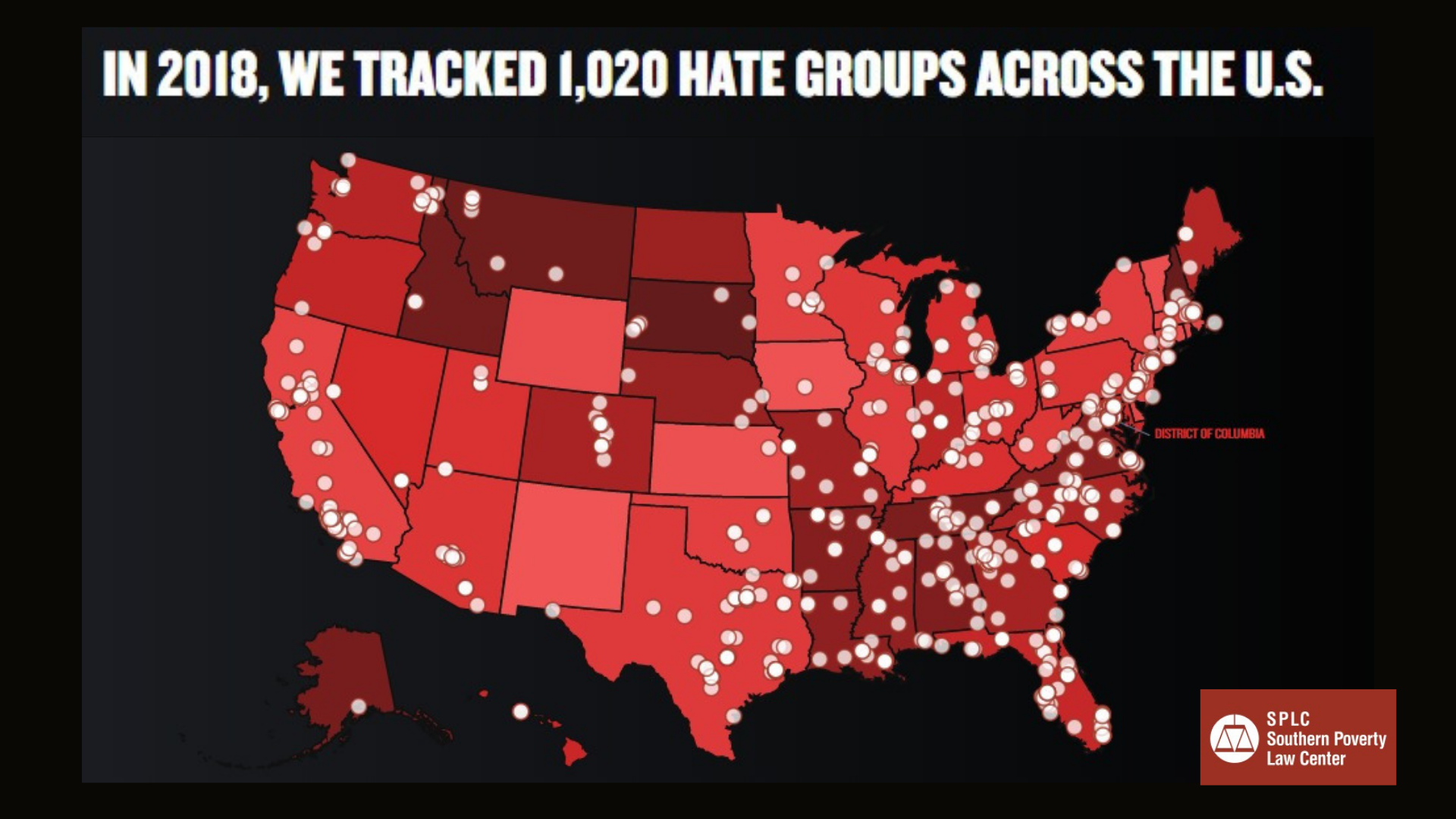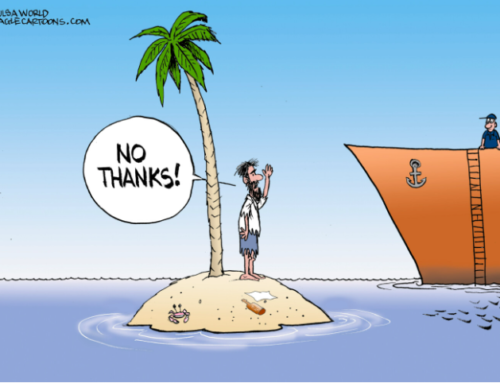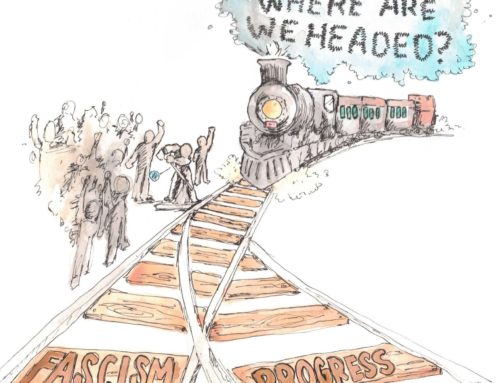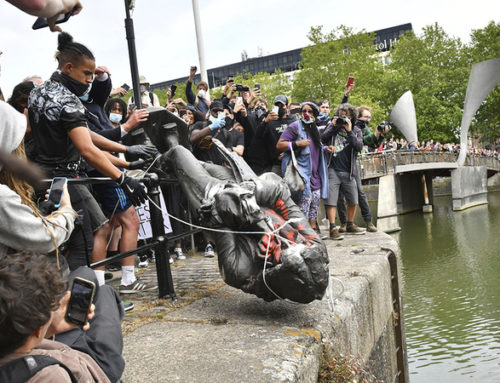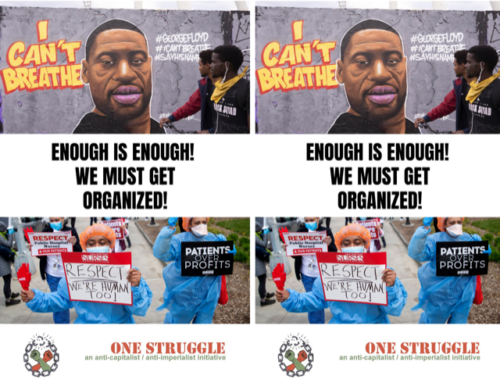There’s a lot out there that tries to explain what fascism is. Historians, academics, philosophers, and journalists are struggling to define the term now, as they did almost eighty years ago while actual fascist regimes were in power. Today, hate groups are seeping into popular culture with organizations like the Proud Boys, Identity Evropa and Turning Point USA attracting youth that wouldn’t be drawn to their predecessors, vestiges of the KKK that still exist all over the country. The 2017 Unite the Right Rally in Charlottesville, VA made it painfully clear that fascist ideology is not something confined to the backwoods, or only present in the minds of isolated extremists. People are not only identifying with these ideas, they’re getting organized around them. But why is it that we can’t seem to pinpoint what we know is appearing right in front of our faces?
The temptation is to snuff out the smoldering danger, to “make nazis afraid again” by meeting them with aggression to match their violent rhetoric. However, we know all too well the fault in prohibition. Making nazis afraid to show their faces does nothing to weaken the fascist theories that people are clinging to, and even less to combat the overarching systemic issues that create a condition favorable for their advancement. What we have to realize is that many of the things that we identify as fascist themselves are political and ideological expressions and manifestations of a deeper phenomena rooted in the very structure of society. Before we can get into what fascism IS, we first have to understand what fascism ISN’T.
Typically we mistake Fascism with its features: rallies, symbols, speeches, violence…but these features aren’t fascist in and of themselves. A phenomena like Fascism can have many different expressions, but the root is always an economic crisis of capitalism. In the global economic system, crises tend to spread rapidly from country to country, which goes hand in hand with social unrest, which goes hand in hand with a panicked bourgeoisie. This panicked bourgeoisie, no matter their political affiliation, will always keeps a fascist joker on deck. It is not one corrupt authoritarian leader that brings about the dawn of fascism. Attempts at ramping up fascist rhetoric and acts of violence (which we see all over the US and the world) are either openly or silently condoned by the ruling class as they respond to capitalism’s global economic crisis.
The most recognizable expression of fascism is repression, whether that’s by cops, the military, or border patrol. Authoritarian regimes are one way to facilitate fascist policy, but fascist interests are represented in “democratic” social arrangements as well. As the hands of the state, police are utilized by all forms of government to aid in the domination of the masses. This domination is essential to maintaining class-divided society, so cops will be the most aggressive perpetrators of the policies of the capitalist class. This doesn’t make the police the fascists – it’s business as usual. Even if we see an increase of sanctioned violence from the police and other arms of the state, it’s more a harbinger of fascism than fascist itself. Even if we abolish ICE, prisons, and the police, it wouldn’t address the economic, political, and ideological arrangements that uphold capitalism and imperialism’s constant failure and crisis.
While economic crisis and autocratic rule fuel more brutal forms of subjugation, fascism isn’t rooted in bigotry or white supremacy. Historically, ethnicity and race have been used to divide the masses against each other in the interest of ruling class minorities. This intensified under colonization and the beginning of capitalism and industrialization, so it can be difficult to separate racial antagonisms and class antagonisms. But while white supremacy is repressive and violent, it’s used more as a tool of capitalism AND fascism as a means to expand and contract markets as well as dominate all other classes outside of the bourgeoisie, both economically and ideologically.
Stoking racial and ethnic divisions (as well as those based on sexual orientation, gender identity, religion…) is an easy way to incite intense nationalism – another expression of fascism. Different fractions of a country’s ruling class will galvanize the people under a nationalist ideal to justify their own means of accumulation, which is always their first concern. But nationalism, again, isn’t fascist in and of itself. Tariffs, sanctions, embargoes, tax incentives – these policies aren’t made in any nationalist interest, but in the interest of fractions of the bourgeoisie and their particular methods of accumulation. The “conservative” side of the political spectrum uses national identity as impetus to return to older, often industrial forms of accumulation – coal mining, oil extraction, etc. The “liberal” side isn’t as invested in these older forms of accumulation, and so doesn’t need the nationalist ideology to push for their own methods of accumulation. They may even resist fascist expressions and alternatives.
As much as it is expressed in fascist ideology, nationalism also isn’t realistic. The capitalist class in every country is so wrapped up in imperialist ventures that putting any one country “first” is impossible. This is why we often see the rise of more baldly corrupt practices during times of autocratic or fascist domination – economic crisis requires new forms of accumulation, which include forcing new avenues of profit, even if they’ve previously been considered “taboo.” The capitalist class will use the state as their new form of accumulation, rearranging institutions, departments, and programs as a blatant means of maintaining their own class position, as well as domination over other classes.
This is why accusations of corruption and “crony” capitalism also don’t define the heart of fascism. These ideas are misnomers for the reality of capitalism and imperialism: corporations, special interest groups, bureaucrats, and politicians already govern in their own interests. While we may correctly be seeing fascism as being on the rise, we falsely believe that it is somehow separate from the dictatorship we’re already under. To the contrary, we’re seeing often hidden relationships and structures reveal themselves as the progressive veneer of an up-swing in capitalist accumulation becomes impossible to sustain for the ruling class. And while they scramble to deal with their own internal crisis, capitalists and imperialists will continually tighten their grip on our lives with little to no regard for our humanity.
Fascism isn’t just about authoritarianism, cops, nationalism, ethnic purity, etc. If we mistake these expressions as the root cause, then we miss the mark in our aim to destroy fascism and its ideologies and politics. We will continue to be at the whim of the bourgeoisie’s booms and busts if we don’t begin to organize against fascism and its root: capitalism. When we form a mass movement capable of bringing a true alternative that serves the interests of the people is when we’ll leave fascism firmly in the realm of history, never to cycle back through the endless merry-go-round that is capitalist and imperialist hegemony.
This is the first post of our Sprouting Theory series, part of our Seeds of Unity project. Click here for the next installment: What Fascism Is.

